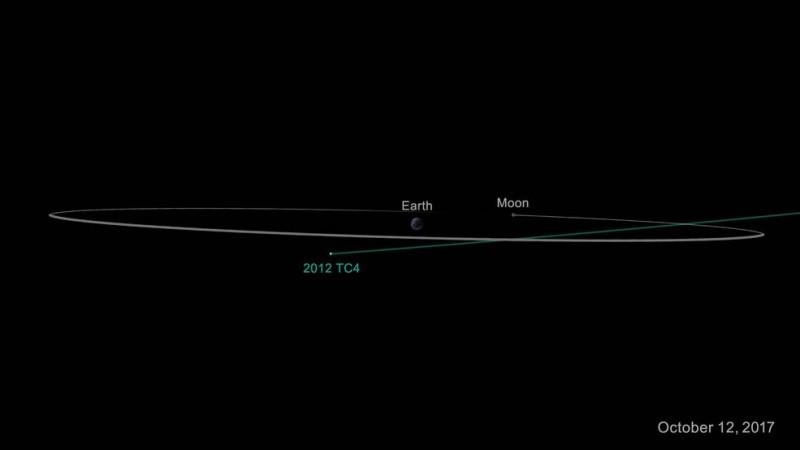
An asteroid dubbed as 2012 TC4 will be passing by Earth next week, on October 12, 2017. First discovered in the year 2012, this asteroid is still being tracked by the scientists. It is estimated that TC4 could come to a close proximity of 6759.245 kilometres (4,200 miles) to Earth's surface.
The space rock is around 30 feet to 100 feet in size. It will be passing by Earth at a speed of 14 kilometres per second (30,000 mph). TC4 becomes one of the largest asteroids which will be passing by Earth and it will be one of the closest approaches that would be taking place this year.
Astronomers from NASA are looking forward to using this occasion to test its planetary defense system and test its potential. The planetary defense system is being developed by the NASA astronomers along with the International Asteroid Warning Network over a few years.
"This is a team effort that involves more than a dozen observatories, universities and labs across the globe so we can collectively learn the strengths and limitations of our near-Earth object (NEO) observation capabilities," according to Professor Vishnu Reddy of the University of Arizona's Lunar and Planetary Laboratory in Tucson.

"This effort will exercise the entire system, to include the initial and follow-up observations, precise orbit determination, and international communications," he said.
The latest analysis of the space rock has aided the researchers at NASA's Center for Near-Earth Object Studies (CNEOS) to come up with a more refined orbit of the asteroid and the distance at which it will make its closest approach.
TC4 appears to be dim despite travelling at a pace of 14 kilometres per second (30,000 mph). It is believed to turn more radiant as it gets closer, a Newsweek report stated.
"Scientists have always appreciated knowing when an asteroid will make a close approach to and safely pass the Earth because they can make preparations to collect data to characterize and learn as much as possible about it. This time we are adding another layer of effort, using this asteroid flyby to test the worldwide asteroid detection and tracking network, assessing our capability to work together in response to finding a potential real asteroid threat," said Michael Kelley, who is leading the TC4 observation campaign.
A network of observatories has been set up to act as an asteroid warning system by the astronomers to examine TC4. The tests would help them in refining the network and techniques they use to detect NEOs.
"This is the perfect target for such an exercise because while we know the orbit of 2012 TC4 well enough to be absolutely certain it will not impact Earth, we haven't established its exact path just yet," said Paul Chodas, manager of the CNEOS at NASA's Jet Propulsion Laboratory.
"It will be incumbent upon the observatories to get a fix on the asteroid as it approaches, and work together to obtain follow-up observations that make more refined asteroid orbit determinations possible," he added.














